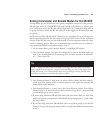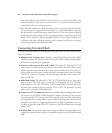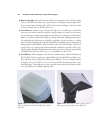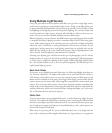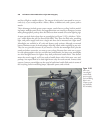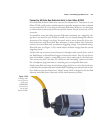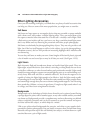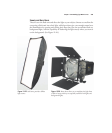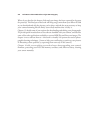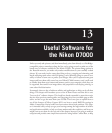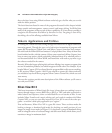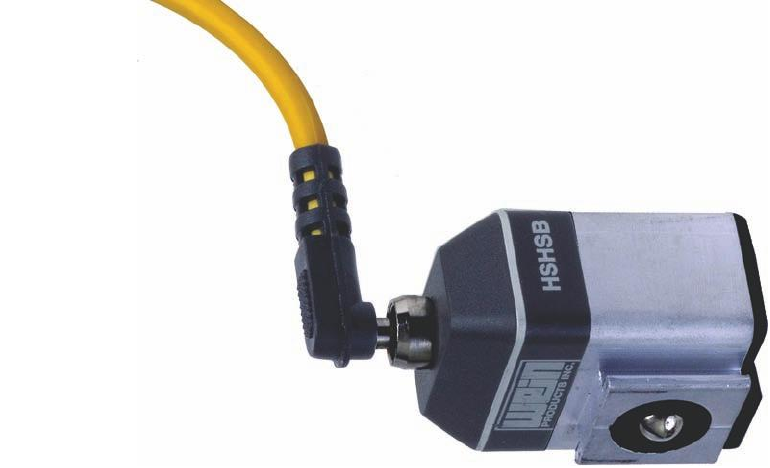
Connecting Multiple Non-Dedicated Units to Your Nikon D7000
Non-dedicated electronic flash units can’t use the automated i-TTL features of your
Nikon D7000; you’ll need to calculate exposure manually, through test shots evaluated
on your camera’s LCD, or by using an electronic flash meter. Moreover, you don’t have
to connect them to the accessory shoe on top of the camera. Instead, you can use a PC/X
connector.
You should be aware that older electronic flash units sometimes use a triggering volt-
age that is too much for your D7000 to handle. You can actually damage the camera’s
electronics if the voltage is too high. You won’t need to worry about this if you pur-
chase brand new units from Alien Bees, Adorama, or other vendors. But if you must
connect an external flash with an unknown triggering voltage, I recommend using a
Wein Safe Sync (see Figure 12.24), which isolates the flash’s voltage from the camera
triggering circuit.
Another safe way to connect external cameras is through a radio-control device, such as
the RadioPopper or PocketWizard triggers I mentioned earlier. They clip on the hot
shoe and transmit a signal to a matching receiver that’s connected to your flash unit.
The receiver may have a hot shoe, PC connector, and “monoplug” connector (it looks
like a headphone plug) that links to a matching port on compatible flash units.
Finally, some flash units have an optical slave trigger built in, or can be fitted with one,
so that they fire automatically when another flash, including your camera’s built-in unit,
fires. Make sure the slave feature has a “digital” mode, which is designed to fire the flash
when the main flash burst is detected, not the initial monitor pre-burst.
Chapter 12 ■ Making Light Work for You 437
Figure 12.24
A voltage isola-
tor can prevent
frying your
D7000’s flash
circuits if you
use an older
electronic flash.



